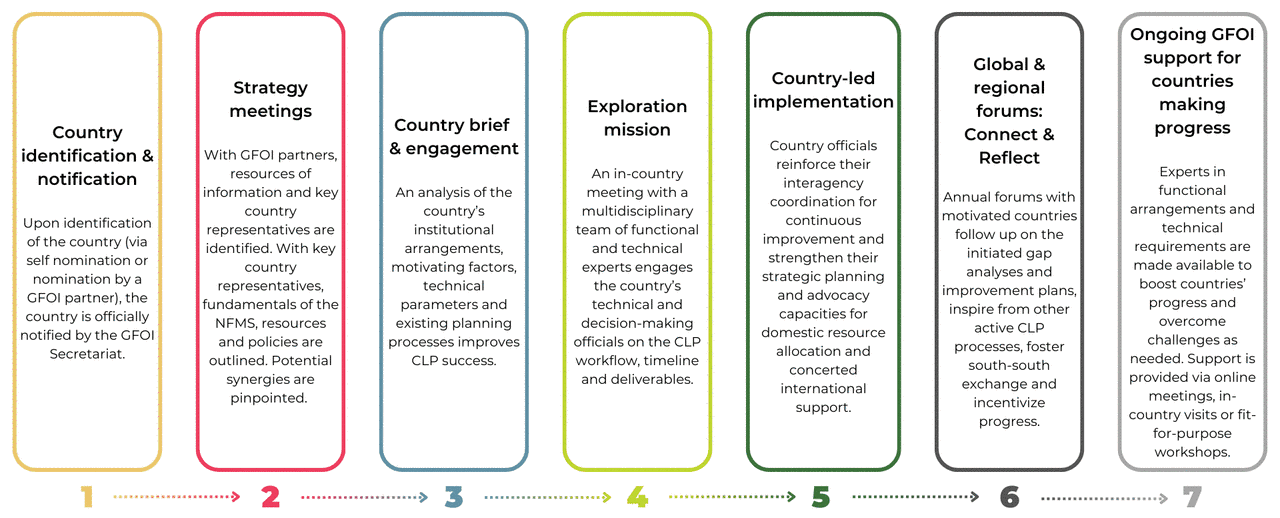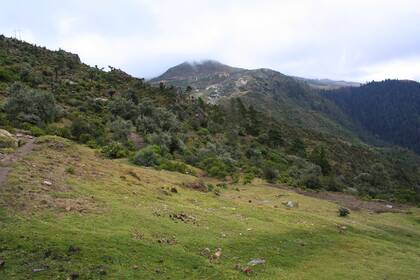Country-Led Planning
BACKGROUND
Tropical forest countries have been developing national forest monitoring systems (NFMSs) and associated emissions measurement, reporting and verification (MRV) procedures for more than a decade with the support of the international community. Impressive progress has been made in building the technical aspects of these systems and applying them to establish emission baselines and report results from emissions reduction efforts. To sustain and further build upon this progress, a concerted effort is needed to embed these systems within national institutions and apply them to a broader range of national needs such as informing forest management decisions, policy development and ongoing climate action. To enable this, countries need to activate their own national planning and coordination processes that they use to sustain other national programmes and core functions of government.
OVERVIEW
Country-Led Planning (CLP) is a new initiative of the Global Forest Observations Initiative (GFOI). It aims to help motivated countries embed their NFMSs within national institutions so that they can be sustained overtime and used to address national needs. It involves supporting countries to self-identify and then implement a series of coherent steps to operationalize and sustain their NFMSs and associated MRV procedures as a core function of government.
A key premise of the CLP is that it is country led. This initiative will help countries to strengthen and sustain the functional and technical aspects of these systems. The CLP process seeks to support countries in taking ownership of their NFMSs, while the GFOI programme of support will periodically support countries to implement the process and incentivize continued progress.
CLP STEPS
The GFOI’s CLP consists of seven steps. The first four steps are led by the GFOI to firstly identify countries that could most benefit from the CLP and then prepare to identify the correct institutions and individuals to lead the process. From the fifth step onwards, the process is led by the country and will be entirely unique to each country. This could include facilitating national consultations or planning meetings, legal frameworks, administrative processes or any other functional capability that the country needs to help embed their NFMS within their national institution. The GFOI will provide support to help countries progress through the process but they will lead these efforts according to their existing national planning processes and institutional arrangements.

While the ultimate goal of the CLP is to help countries operationalize and sustain their NFMS by embedding them within their national institutions, there are several steps involved in the process for achieving this. This includes the following:
- a brief on operational institutional arrangements and national objectives for the NFMS;
- a functional and technical gap assessment on the NFMS design, progress and next steps;
- a national planning process to fill gaps and address the identified needs and;
- implementation of this plan to establish the NFMS as a core function of government.
COUNTRIES
The GFOI is currently supporting Country-Led Planning for NFMSs and MRV procedures in the following countries:

- Democratic Republic of the Congo

- Fiji

- Guatemala

- Kenya

- Peru

- Vietnam
FUNDING
The GFOI Office, hosted by the Food and Agriculture Organization of the United Nations (FAO), has secured funding for the GFOI’s CLP programme under FAO’s Aim4Forests programme, funded by the United Kingdom of Great Britain and Northern Ireland's Department for Energy Security and Net Zero.
If a country is interested in learning more about the CLP, please contact the GFOI Office at [email protected].